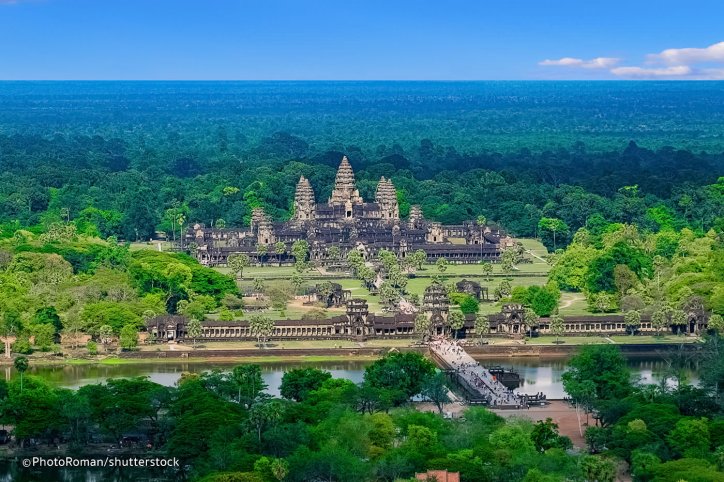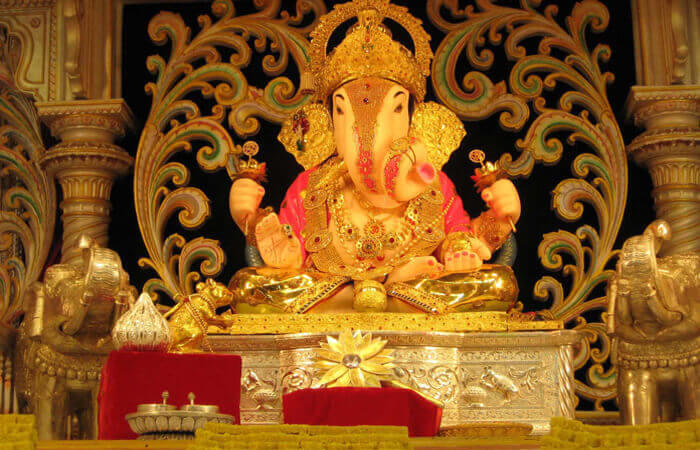Angkor Wat – Largest religious Monuments Of The World

Angkor Wat, a vast Hindu-Buddhist temple complex in North-central Cambodia, is among the most magnificent architectural wonders of Southeast Asia.
It was originally constructed as a Hindu temple dedicated to the god Vishnu for the Khmer Empire, gradually transforming into a Buddhist temple towards the end of the 12th century.
History
Founded more than a millennium ago, the ancient city was the one-time seat of the mighty Khmer Empire. The Khmer empire encompassed much of Southeast Asia from the 9th to the 13th Century. It dominated the area of present-day Cambodia, as well as a lot of Thailand, Southern Vietnam, and Laos.
More than a million people lived in the capital city of Angkor. King Suryavarman II built Angkor Wat in the early 12th Century, at the height of the Khmer Empire’s power.
Angkor is a Khmer word, derived from Sanskrit nagara and means “city”. The Khmer king constructed a gigantic temple based on the Indian divine design and another religious iconography as a microcosmic representation and the central axis of the universe.
This conception was best expressed in the world’s largest stone temple of Angkor Wat which means the temple of the city. Later king Suryavarman II constructed as many temples as his predecessor all together including the state temple of Bayon. A total number of 47 major temples have been built during the Angkor Period.
The frequent invasive attacks from the neighboring countries, the Siam and Champa (present Thailand and Vietnam respectively) finally led to the end of the glory and the stone temple construction. In 1431, the Siamese troop of Ayutthaya defeated the decisive victory and dominated Angkor for about 100 years while the Khmer King Ponhea Yat was forced to move his capital to Phnom Penh, where it is until today.
Latest Khmer temple records show that more than one thousand Khmer temples had been built during these ages, but over the years of wars but also looting and attacks from tropical climate and vegetation most of the temples are nowadays in very critical circumstances.
The UNESCO established their regional office in Cambodia in order to assist the local authority APSARA to call for international help on safeguarding Angkor. Angkor was registered in the UNESCO World Heritage list as a World Heritage site in Danger in December 1992. Since then, high-level national and international authorities open access for professional teams worldwide to conduct a wide variety of scientific and cultural research projects, with an ambitious target for restoration, reconstruction, conservation, and developing the Angkor archeological park and its ruins.
Architecture Style
Angkor temples are religious buildings, dedicated to Buddhism or Hinduism. In both religions, one of the most outstanding symbols in iconography is the lotus flower.
Since the ancient time of Hindu tradition, lotus blossoms are regarded as divine symbols for the creation of mythology. The Hindu god of creation Brahma is often depicted as sitting on an opened lotus flower or with a lotus in his hand.
Similar illustrations can be observed from Buddha. In Buddhism, the lotus flower that is floating above the muddy water of desire and attachment represents the purity of the mind and body. Lotus symbolisms are also attached to the Buddhist and Hindu divine design of Mandala which is the fundamental design principle for temples constructions.
The ancient Khmer temple architects and artists must have been very much inspired by the theory and practices of the sacred lotus ideology. They skillfully converted this concept into a unique work of art and architectural element and gave the Khmer temple structure an unmistakable characteristic. Besides constructing the temple towers in the form of a closed-up lotus flower, the architects illustrated almost any temple element with various physical properties and positions of the lotus petals.
Highlights and Features of Angkor Wat
- The temple is about 1 km square and consists of three levels.
- The exterior wall surrounding Angkor Wat measures 1,300 meters x 1,500 meters.
- Bas-reliefs and carvings cover almost every wall of the temple. Those on the exterior walls of the lower level are especially remarkable.
- There are carvings of almost 2,000 Apsaras (celestial dancers). These inspired the revival of the Apsaras Dance in Cambodian culture.
- Other carvings show scenes of wars, everyday life, and Hindu legends.
- The south wall shows scenes of heaven and hell.
- Depictions of the Hindu ‘Churning of the Ocean Milk’ are on the east wall.
- The main tower on the third level contains four Buddha statues. Each statue faces a different point on the compass. Paying respect to these statues is said to bring good luck.
- The stone structures seen today are only part of what used to exist at Angkor. There was also an enormous city of wooden houses, markets, shops, palaces, and public buildings.
Angkor was abandoned after being sacked by Siam (now Thailand) in 1431. - The French government established the Angkor Conservancy in 1908. They were the first to restore the temples of Angkor Wat, Bayon, and Ta Prohm.
Suggested Read: How Did Cambodia Get Its Name?






